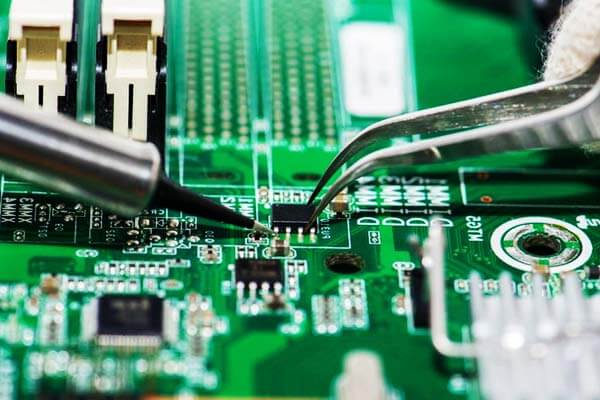1. Ներածություն
Tin is widely used in various applications, from the production of alloys like bronze to its role in modern Էլեկտրոնիկա մի քանազոր զոդում.
But despite its usefulness, many wonder whether tin has any magnetic properties.
This article will answer this question by examining tin’s properties, how it behaves in a magnetic field, and how these characteristics impact its uses in different industries. Այսպիսով, let’s get started!
2. What is Tin?
Անագ (symbol Սննոց, atomic number 50) է chemical element -ում carbon group of the periodic table.

It has been known and used by humans for over 5,000 տարիներ, primarily for making Ալյումինե, especially բրոնզ.
Պատմականորեն, tin was crucial in the development of civilization, used for tools, մետաղադրամներ, և դեկորատիվ իրեր.
It is a relatively soft, silvery metal that is resistant to corrosion, which makes it ideal for use in զոդում, as well as in սննդի փաթեթավորում.
Tin is often alloyed with other metals, such as copper, lead, and antimony, to create materials with enhanced properties.
Օրինակ, tin-plated steel is widely used in the food and beverage industry for creating tin cans that preserve food for long periods.
3. Is Tin Magnetic?
Now, let’s address the key question: Is tin magnetic?

Scientific Explanation of Tin’s Magnetic Properties
The answer is a resounding no, tin is not magnetic. This is because tin is a non-ferromagnetic մետաղական.
Ferromagnetic materials, ինչպիսիք են երկաթ, նիկել, մի քանազոր կոբալտ, are magnetic because their atomic magnetic moments align in the presence of an external magnetic field.
This alignment causes them to be attracted to magnets.
Ի հակադրություն, tin’s atomic structure does not allow its magnetic moments to align in such a manner, making it ոչ մագնիսական.
Even when exposed to a magnetic field, tin does not exhibit a strong attraction or repulsion.
Հետեւաբար, tin is considered դիամագնիսական, meaning it is weakly repelled by a magnetic field, but the effect is almost imperceptible in practical applications.
Factors Affecting Tin’s Magnetic Properties
Tin’s lack of magnetism is largely due to its electron configuration մի քանազոր Ատոմային կառուցվածք.
Unlike ferromagnetic metals, where unpaired electrons contribute to the magnetic behavior, tin’s electrons are paired in such a way that they do not contribute to a magnetic moment.
Արդյունքում, tin does not respond to magnetic fields like iron or nickel.
4. Tin’s Magnetic Properties in Comparison to Other Metals
To understand why tin behaves differently from magnetic metals, it is helpful to compare it with metals that exhibit magnetic properties.
This comparison highlights the fundamental differences in their atomic structures and behavior in magnetic fields.
Ferromagnetic Metals (Է.Գ., Երկաթ, Կոբալտ, Նիկել)
Ferromagnetic metals are the most well-known magnetic materials.
Metals like երկաթ, կոբալտ, մի քանազոր նիկել exhibit strong magnetic properties because their atoms have a magnetic moment that can align with an external magnetic field.
When these metals are placed in a magnetic field, their atoms align in the same direction, creating a strong attraction to the magnet.
Լրացուցիչ, ferromagnetic materials can become permanently magnetized, retaining their magnetic properties even after the external field is removed.
Paramagnetic Metals (Է.Գ., Ալյումին, Պլատին)
Paramagnetic մետաղներ, ինչպիսիք են ալյումին մի քանազոր platinum, are weakly attracted to magnets.
While these metals have unpaired electrons, the magnetic moments in their atoms do not align as strongly as those in ferromagnetic materials.
Արդյունքում, the attraction is weak and temporary. When the external magnetic field is removed, paramagnetic metals return to their non-magnetic state.
Tin’s Atomic Structure
Tin does not exhibit the same magnetic behavior as ferromagnetic or paramagnetic materials.
Այն Ատոմային կառուցվածք does not allow for the alignment of magnetic moments, resulting in no significant interaction with magnetic fields.
Հետեւաբար, tin remains ոչ մագնիսական and does not retain any magnetic properties after exposure to a magnetic field.
5. Applications and Practical Relevance of Tin’s Non-Magnetic Properties
Tin’s non-magnetic properties might initially seem like a limitation, but in fact, they offer numerous benefits across various industries.
Many applications rely on tin’s unique ability to resist magnetic interference, ensuring safety, ճշգրտություն, եւ հուսալիություն.
Let’s explore some of the most significant uses where tin’s non-magnetic characteristics prove to be invaluable.
Electronics and Soldering
One of the most prominent applications of tin is in զոդում—a process that involves joining two metal components by melting a filler metal (զոդում) into the joint.
Tin is a key component in most solder alloys, մասնավորապես մեջ tin-lead մի քանազոր tin-silver զոդում, due to its excellent հաղորդունակություն, ճկունություն, մի քանազոր ոչ մագնիսական nature.

The fact that tin doesn’t attract magnets or interfere with the operation of electronic circuits is crucial.
Մեջ միկրոէլեկտրոնիկա, որտեղ miniaturization մի քանազոր ճշգրտություն էական են, tin’s non-magnetic properties ensure that it doesn’t interfere with the operation of delicate electronic components.
Any magnetic material in these tiny devices could cause unwanted disruptions in their functioning, so tin’s inert behavior around magnetic fields is an advantage.
Օրինակ, smartphones, computers, մի քանազոր television sets rely heavily on soldered connections made with tin-based alloys.
Որեվէ ավելին, surface-mount technology (SMT), a standard in modern electronics, often uses tin in soldering to connect components to printed circuit boards (Հատ).
The absence of magnetism reduces the chances of interference with the signals running through these boards, ensuring that devices function correctly without the risk of magnetic disturbances.
Ալյումինե
Tin has been used to form important Ալյումինե for centuries. The most famous is բրոնզ, an alloy of tin and copper, known for its Կոռոզիոն դիմադրություն մի քանազոր ամրություն.
Tin also forms alloys with lead, antimony, and other metals, contributing to its presence in applications ranging from զարդեր դեպի Ավտոմոբիլային մասեր.
The non-magnetic nature of tin in these alloys is especially important for industries like marine engineering մի քանազոր electrical manufacturing.
Օրինակ, bronze is used in ship propellers մի քանազոր փականներ because its corrosion resistance allows it to perform in harsh, ծովային միջավայրեր.
The lack of magnetic properties in tin ensures that these alloys remain unaffected by external magnetic fields,
which might otherwise interfere with machinery or cause inaccurate readings in sensitive instruments.
Բացի այդ, pewter, an alloy of tin, պղնձ, and other metals, is frequently used in decorative items such as candlesticks, figurines, մի քանազոր medals.
Its low magnetic properties ensure that it doesn’t cause interference in manufacturing processes, and its attractive sheen makes it ideal for artistic applications.
Սննդի և խմիչքների արդյունաբերություն
Tin’s ability to resist corrosion and its non-reactive nature make it a top choice for packaging, particularly in the food and beverage industry.
Tin cans have been used for centuries to preserve food by preventing contaminants and air from entering.

Unlike other metals, tin doesn’t react with the contents inside the can, ensuring that the food remains fresh and safe to eat.
One major advantage of tin’s non-magnetic properties in food packaging is that it avoids interference during the sealing and manufacturing process.
Canning lines մի քանազոր production equipment often incorporate magnetic systems to handle products.
The absence of magnetism in tin ensures that there is no risk of attracting debris or interfering with the machinery,
which would otherwise disrupt the packaging process or lead to contamination.
Որեվէ ավելին, tin-plated steel is commonly used in the production of cans,
as the tin coating prevents rust and corrosion, offering a longer shelf life for products.
Օրինակ, soda cans մի քանազոր tinned vegetables rely on the benefits of this non-magnetic, non-reactive metal to ensure safe and efficient storage.
Medical and Pharmaceutical Applications
In the medical field, tin’s ոչ մագնիսական properties are beneficial when used in certain implantable devices մի քանազոր բժշկական գործիքներ.
Some surgical instruments and Իմպլանտներ—such as those used in dental procedures—
require the use of non-magnetic materials to ensure compatibility with MRI (Magnetic Resonance Imaging) machines.
Tin’s non-magnetic nature makes it an ideal choice for such applications, preventing any interference with imaging technology that could compromise diagnostic results.
Ի հավելումն, pharmaceutical manufacturing also utilizes tin for its կայունություն մի քանազոր inertness in the production of containers and equipment.
This is especially critical in the packaging of sensitive compounds or medicines,
where even the smallest magnetic disruption could alter the chemical structure or the content of a drug.
Այլ մասնագիտացված ծրագրեր
- Օդատիենտ: Tin’s resistance to magnetic interference is also beneficial in specialized applications like օդատիենտ Տեխնոլոգիաներ.
Tin alloys are used in precision instruments and components where exact measurements are needed, and magnetic properties could lead to inaccuracies.
Լրացուցիչ, է non-magnetic characteristics are useful in radar systems մի քանազոր navigation instruments, where magnetic materials could cause signal distortions. - Coatings and Tin-Plated Metals: Tin is often used as a coating for պողպատ մի քանազոր other metals to prevent corrosion.
Այն ոչ մագնիսական nature ensures that tin-coated products maintain their integrity in applications where magnetic interference could cause failures,
ինչպիսիք են high-frequency electronics մի քանազոր microwave equipment.
6. Can You Magnetize Tin?
While tin itself cannot be magnetized, it can be part of an alloy that exhibits magnetic properties. Սակայն, tin on its own will never retain magnetism under typical conditions.
Even under the influence of a strong magnetic field, tin’s atomic structure prevents it from becoming magnetized.
7. Եզրափակում
Եզրափակելով, tin is not magnetic. It is a diamagnetic material weakly repelled by magnetic fields,
but this effect is so minimal that it is practically unnoticeable.
Unlike ferromagnetic metals like iron and nickel, tin’s atomic structure does not allow for magnetic alignment, making it non-magnetic.
While this may seem like a limitation, tin’s lack of magnetism is beneficial in many applications, particularly in electronics, Ալյումինե,
and the food packaging industry, where magnetic interference would be detrimental.
Related article: https://casting-china.org/is-stainless-steel-magnetism/



